American Journal of Computational Mathematics
Vol.2 No.1(2012), Article ID:17965,5 pages DOI:10.4236/ajcm.2012.21006
Solving the Interval-Valued Linear Fractional Programming Problem
Department of Applied Mathematics, Ferdowsi University of Mashhad, Mashhad, Iran
Email: s-effati@um.ac.ir, pakdaman.m@gmail.com, morteza.pakdaman@stu-mail.um.ac.ir
Received December 26, 2011; revised February 15, 2012; accepted February 22, 2012
Keywords: Interval-Valued Function; Linear Fractional Programming; Interval-Valued Linear Fractional Programming
ABSTRACT
This paper introduces an interval valued linear fractional programming problem (IVLFP). An IVLFP is a linear fractional programming problem with interval coefficients in the objective function. It is proved that we can convert an IVLFP to an optimization problem with interval valued objective function which its bounds are linear fractional functions. Also there is a discussion for the solutions of this kind of optimization problem.
1. Introduction
While modeling practical problems in real world, it is observed that some parameters of the problem may not be known certainly. Specially for an optimization problem it is possible that the parameters of the model be inexact. For example in a linear programming problem we may have inexact right hand side values or the coefficients in objective function may be fuzzy (e.g. [1]).
There are several approaches to model uncertainty in optimization problems such as stochastic optimization and fuzzy optimization. Here we consider an optimization problem with interval valued objective function. Stancu, Minasian and Tigan ([2,3]), investigated this kind of optimization problem. Hsien-Chung Wu ([4,5]) proved and derived the Karush-Kuhn-Tucker (KKT) optimality conditions for an optimization problem with interval valued objective function.
A fractional programming problem is the optimizing one or several ratios of functions (e.g. [6]). Such these models arise naturally in decision making when several rates need to be optimized simultaneously such as production planning, financial and corporate planning, health care and hospital planning. Several methods were suggested for solving this problem such as the variable transformation method [7] and the updated objective function method [8]. Several new methods are proposed ( e.g. [9-11]). The first monograph [12] in fractional programming published by the first author in 1978 extensively covers applications, theoretical results and algorithms for single-ratio fractional programs (see [13,14]).
Here first we introduce a linear fractional programming problem with interval valued parameters. Then we try to convert it to an optimization problem with interval valued objective function.
In Section 2 we state some required preliminaries from interval arithmetic. In Section 3 the interval valued linear fractional programming problem is introduced. In Section 4 we solved numerical examples. Finally Section 5 contains some conclusions.
2. Preliminaries
We denote by  the set of all closed and bounded intervals in
the set of all closed and bounded intervals in . Suppose
. Suppose , then we write
, then we write  and also
and also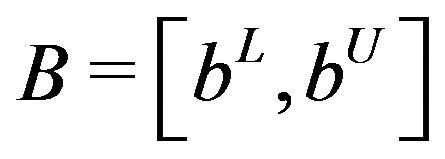 . We have the following operations on
. We have the following operations on  (note that throughout this paper our intervals considered to be bounded and closed):
(note that throughout this paper our intervals considered to be bounded and closed):
(i) 
(ii)  ;
;
(iii) 
where  is a real number and so we have
is a real number and so we have

Definition 2.1. If  and
and  are bounded, real intervals, we define the multiplication of
are bounded, real intervals, we define the multiplication of  and
and  as follows:
as follows:
 where
where . For example if
. For example if  and
and  are positive intervals (i.e.
are positive intervals (i.e.  and
and ) then we have:
) then we have:
 (1)
(1)
and if  and
and  then we have:
then we have:
 (2)
(2)
There are several approaches to define interval division. Following Ratz (see [15]) we define the quotient of two intervals as follows:
Definition 2.2. Let  and
and 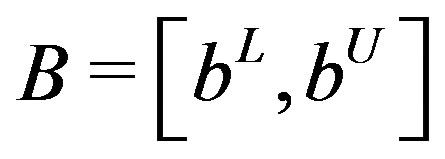 be two real intervals, then we define:
be two real intervals, then we define:

We observe that the quotient of two intervals is a set which may not itself be an interval. For example, . Given definition 2.2, The Ratz formula [15] is given by the following Theorem:
. Given definition 2.2, The Ratz formula [15] is given by the following Theorem:
Theorem 2.1. ([15]) Let  and
and
 be two nonempty bounded real intervals.
be two nonempty bounded real intervals.
Then if 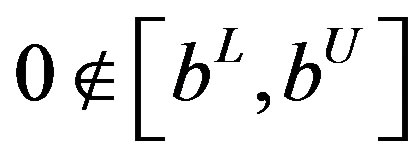 we have:
we have:
 (3)
(3)
Theorem 2.2. (see [16]) If  and
and  are nonempty, bounded, real intervals, then so are
are nonempty, bounded, real intervals, then so are , and
, and . In addition, if
. In addition, if  does not contain zero, then
does not contain zero, then 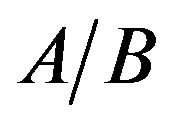 is also a nonempty, bounded, real interval as well.
is also a nonempty, bounded, real interval as well.
Definition 2.3. A function 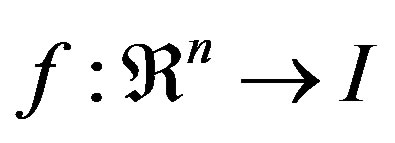 is called an interval valued function (because
is called an interval valued function (because 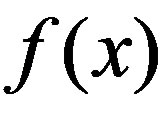 for each
for each 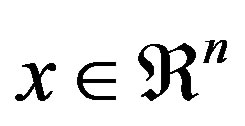 is a closed interval in
is a closed interval in ). Similar to interval notation, we denote the interval valued function
). Similar to interval notation, we denote the interval valued function  with
with  where for every
where for every 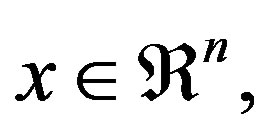
 are real valued functions and
are real valued functions and

Proposition 2.1. Let  be an interval valued function defined on
be an interval valued function defined on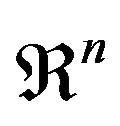 . Then
. Then  is continuous at
is continuous at 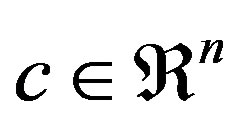 if and only if
if and only if 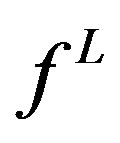 and
and 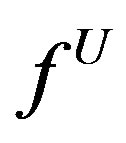 are continuous at c.
are continuous at c.
Now, here we introduce weakly differentiability.
Definition 2.4. Let  be an open set in
be an open set in . An interval valued function
. An interval valued function  with
with
 is called weak differentiable at
is called weak differentiable at  if the real valued functions
if the real valued functions  and
and  are differentiable (usual differentiability) at
are differentiable (usual differentiability) at .
.
Definition 2.5. We define a linear fractional function  as follows:
as follows:
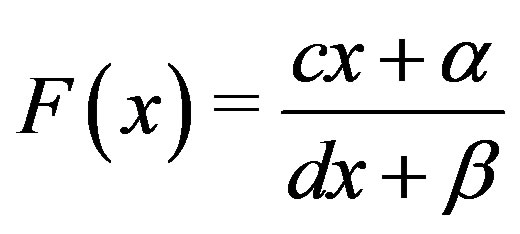 (4)
(4)
where 
 and
and 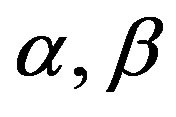 are real scalars.
are real scalars.
Remark 2.1. Note that every real number 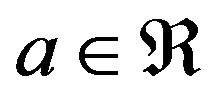 can be considered as an interval
can be considered as an interval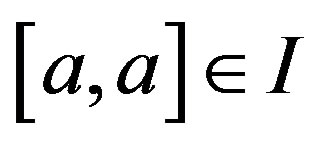 .
.
Definition 2.6. To interpret the meaning of optimization of interval valued functions, we introduce a partial ordering  over I. Let
over I. Let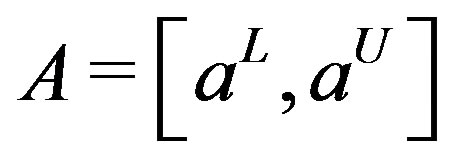 ,
,  be two closed, bounded, real intervals
be two closed, bounded, real intervals , then we say that
, then we say that , if and only if
, if and only if 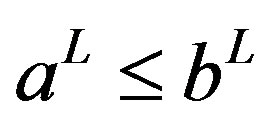 and
and . Also we write
. Also we write , if and only if
, if and only if  and
and . In the other words, we say
. In the other words, we say  if and only if:
if and only if:
 or
or 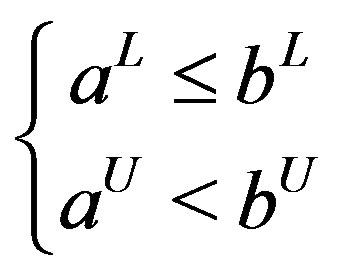 or
or 
3. Interval-Valued Linear Fractional Programming (IVLFP)
Consider the following linear fractional programming problem:
 (5)
(5)
First consider the linear fractional programming problem (5). Suppose that

where , we denote
, we denote  and
and 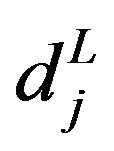 the lower bounds of the intervals
the lower bounds of the intervals  and
and 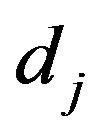 respectively (i.e.
respectively (i.e.  and also
and also
 where
where  and
and 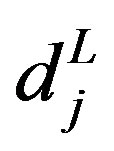 are real scalars for
are real scalars for ) and
) and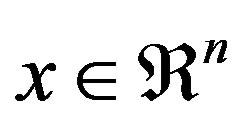 , similarly we can define
, similarly we can define 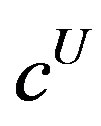 and
and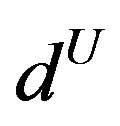 . Also
. Also ,
, . So we can rewrite (5) as follows:
. So we can rewrite (5) as follows:
 (6)
(6)
where 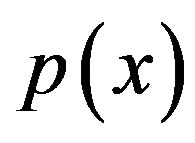 and
and  are interval-valued linear functions as
are interval-valued linear functions as 
and . So for example we have:
. So for example we have:  and
and . Finally from (6) we have:
. Finally from (6) we have:
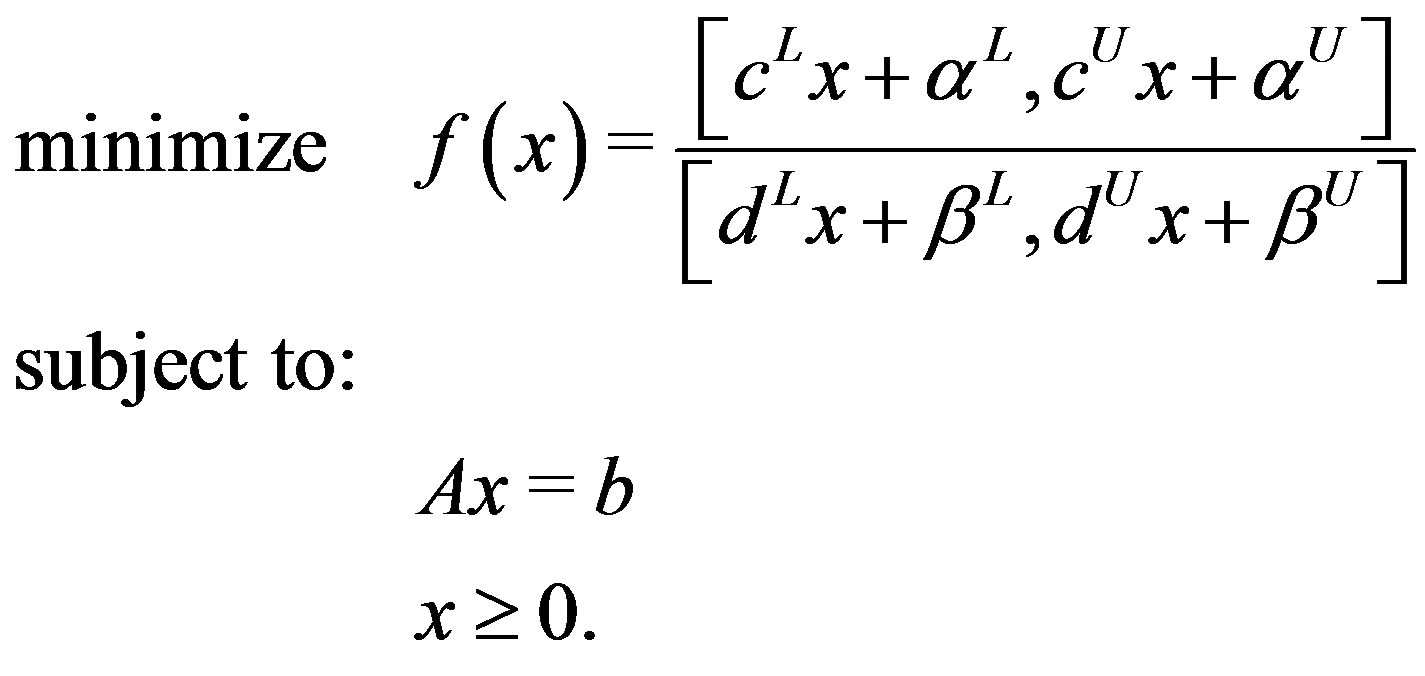 (7)
(7)
To introduce an interval-valued linear fractional programming problem, we can consider another kind of possible linear fractional programming problems as follows:
 (8)
(8)
where  and
and 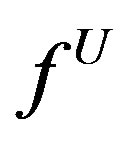 are linear fractional functions (as in definition 2.5). Also we may have interval-valued linear fractional programming in the form (7):
are linear fractional functions (as in definition 2.5). Also we may have interval-valued linear fractional programming in the form (7):
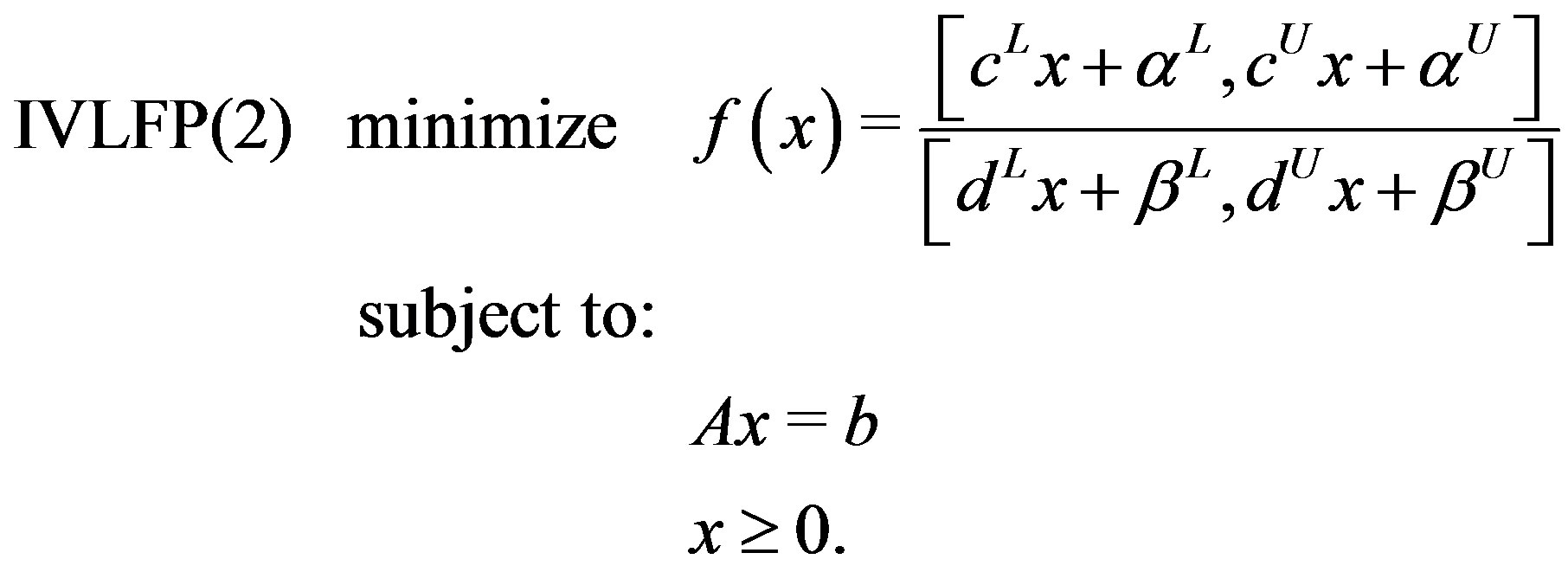 (9)
(9)
Theorem 3.1. Any IVLFP in the form IVLFP(2) (see Equation (9)) under some assumptions can be converted to an IVLFP in the form IVLFP(1) (see Equation (8)).
Proof. The objective function in (9) is a quotient of two interval valued functions (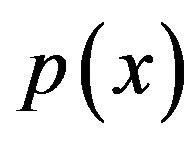 and
and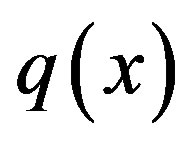 ). To convert (9) to the form (8), we suppose that
). To convert (9) to the form (8), we suppose that  for each feasible point
for each feasible point , so we should have:
, so we should have:
 (10)
(10)
or
 (11)
(11)
for each feasible point . Using theorem 2.1, because the denominator doesn’t contain zero we can rewrite the objective function in (9) as:
. Using theorem 2.1, because the denominator doesn’t contain zero we can rewrite the objective function in (9) as:
 (12)
(12)
Now we can consider two possible states:
Case (1). When , we have two possibilities:
, we have two possibilities:
(i) When , using Definition 2.1, we have:
, using Definition 2.1, we have:
 (13)
(13)
(ii) When , by Definition 2.1, we have:
, by Definition 2.1, we have:
 (14)
(14)
Case (2). When , we have two possibilities:
, we have two possibilities:
(i) When , by Definition 2.1, we have:
, by Definition 2.1, we have:
 (15)
(15)
(ii) When , by Definition 2.1, we have:
, by Definition 2.1, we have:
 (16)
(16)
(Note that the subcase  easily can be derived from above cases, because in this state,
easily can be derived from above cases, because in this state,  implies that
implies that ). Now according to theorem 2.2, and considering above cases, the objective function in (7) can be rewritten as follows:
). Now according to theorem 2.2, and considering above cases, the objective function in (7) can be rewritten as follows:
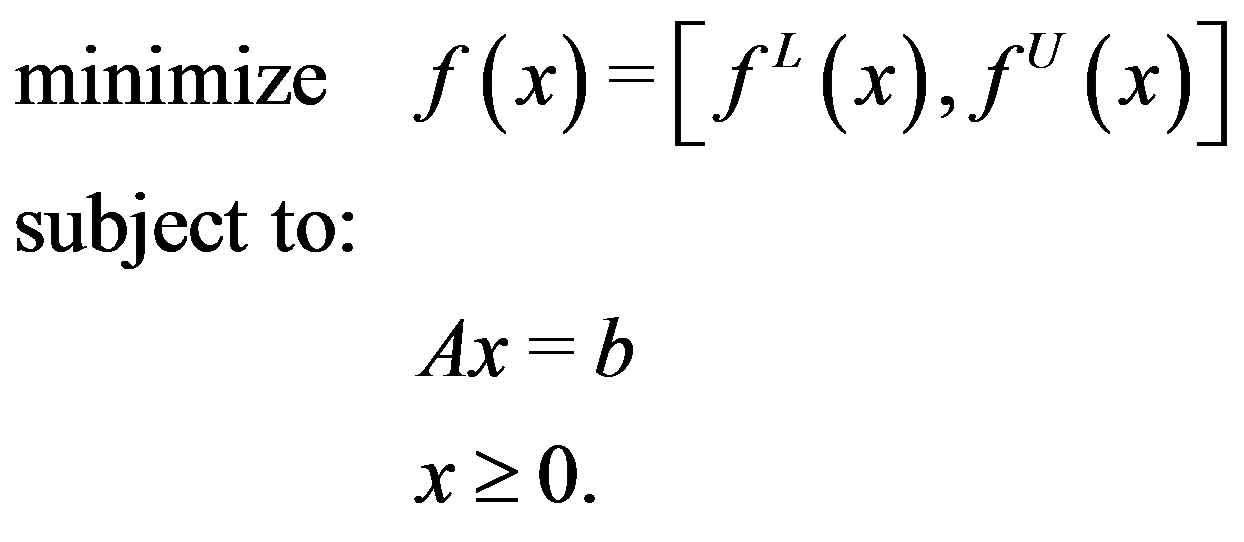 (17)
(17)
where the objective function is an interval valued function and  and
and 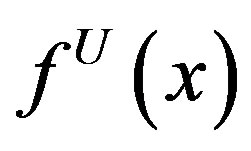 are linear fractional functions (according to the corresponding case (13) - (16)), and this completes the proof.
are linear fractional functions (according to the corresponding case (13) - (16)), and this completes the proof.
Now following Wu [5], we interpret the meaning of minimization in (17):
Definition 3.1. (see [5]) Let  be a feasible solution of problem (17). We say that
be a feasible solution of problem (17). We say that  is a nondominated solution of problem (17), if there exist no feasible solution x such that
is a nondominated solution of problem (17), if there exist no feasible solution x such that . In this case we say that
. In this case we say that  is the nondominated objective value of
is the nondominated objective value of .
.
Now consider the following optimization problem (corresponding to problem (17)):
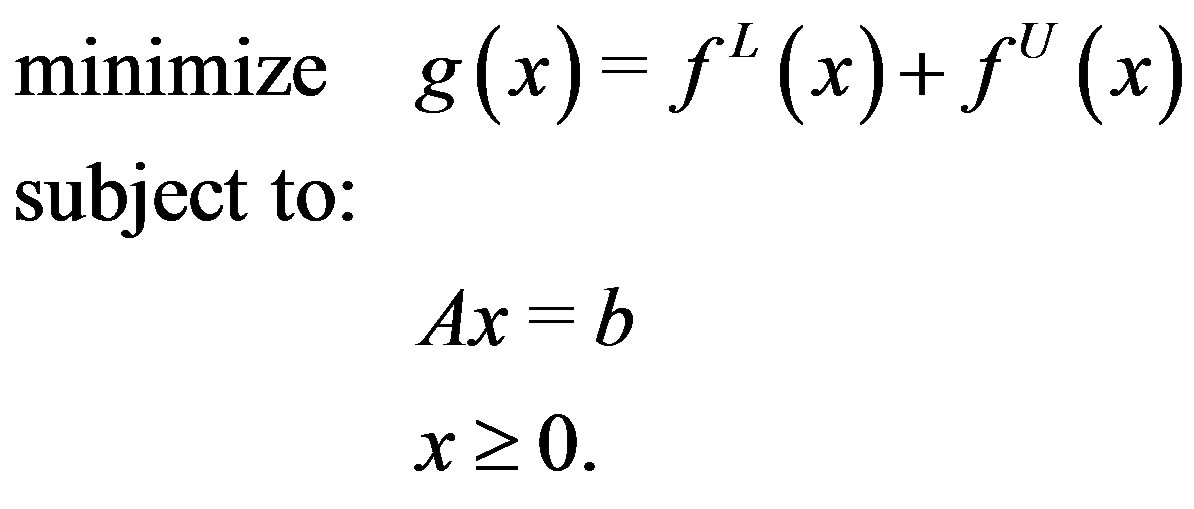 (18)
(18)
To solve problem (17), we use the following theorem from [5].
Theorem 3.2. If  is an optimal solution of problem (18), then
is an optimal solution of problem (18), then  is a nondominated solution of problem (17).
is a nondominated solution of problem (17).
Proof. See [5].
4. Numerical Examples
This section contains three numerical examples which are solved by the new proposed approach. Example 4.3 introduces an application of IVLFP.
Example 4.1. Consider the following optimization problem:
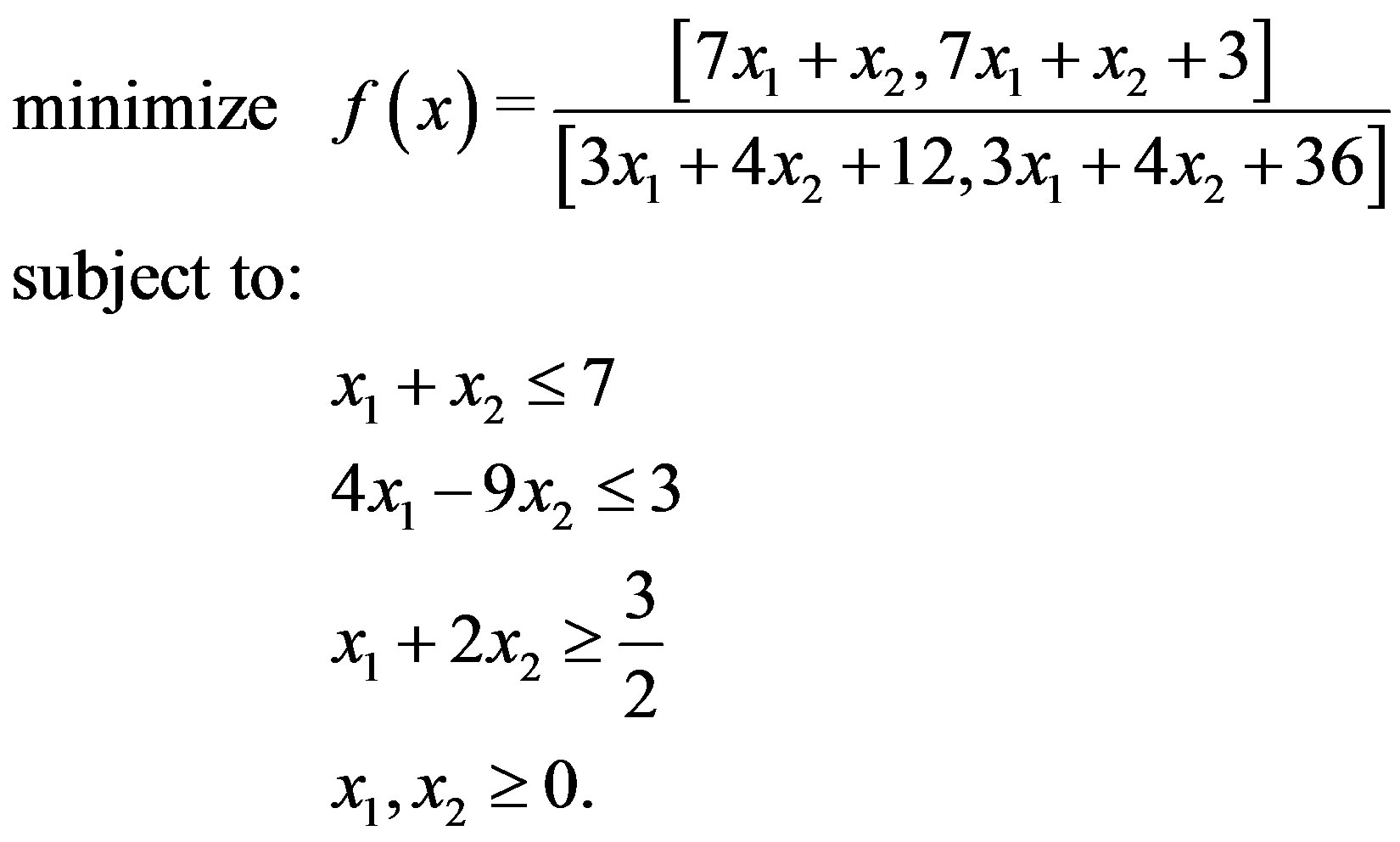 (19)
(19)
We see that here

and
 .
.
So because 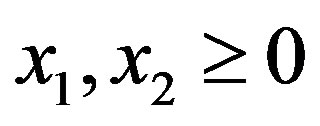 we have
we have  and also
and also  so we should apply case (1)(i). Finally we will have the following optimization problem:
so we should apply case (1)(i). Finally we will have the following optimization problem:
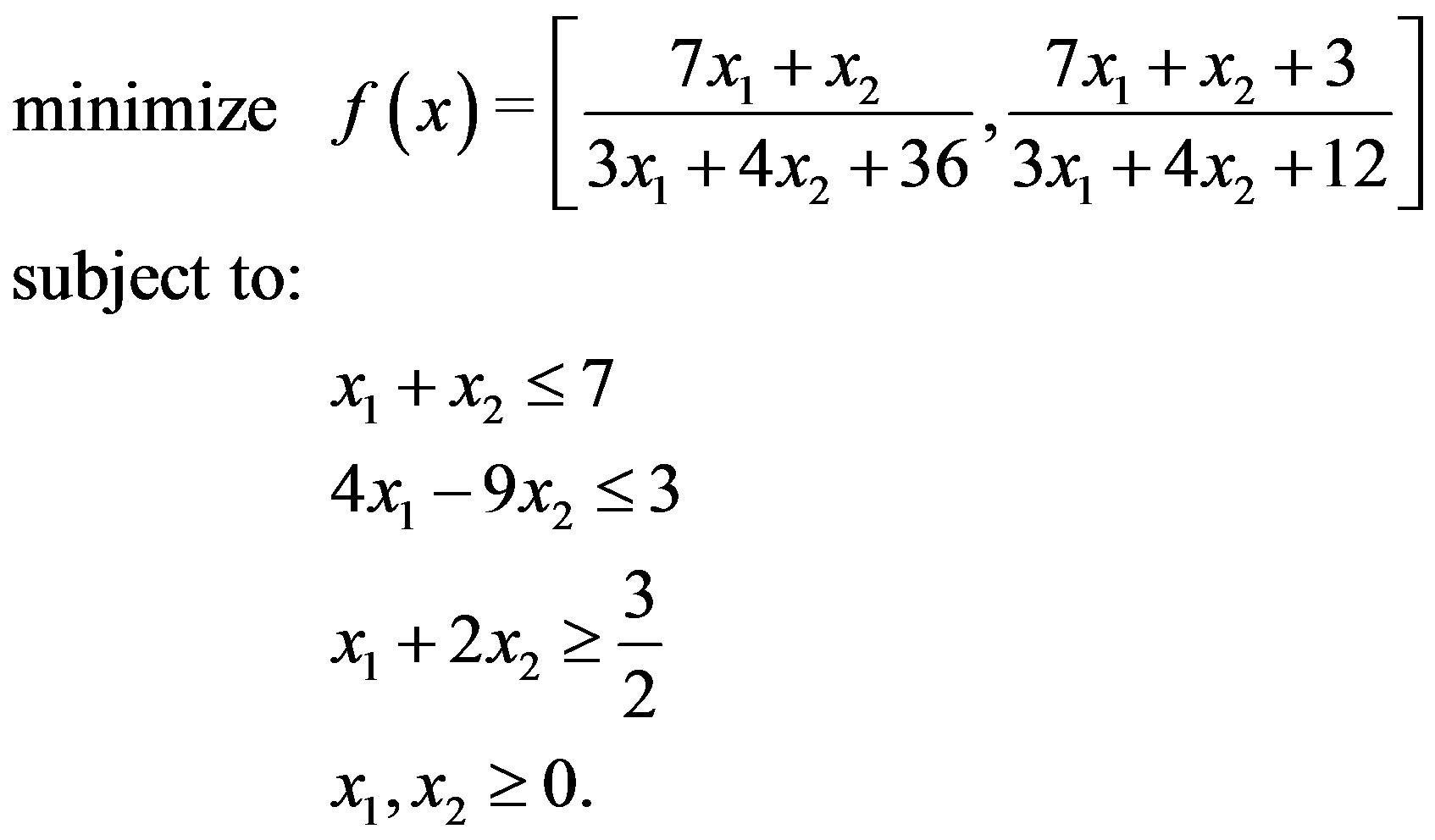 (20)
(20)
Now to obtain a nondominated solution for (20), we use theorem 3.2. and solve the following optimization problem:
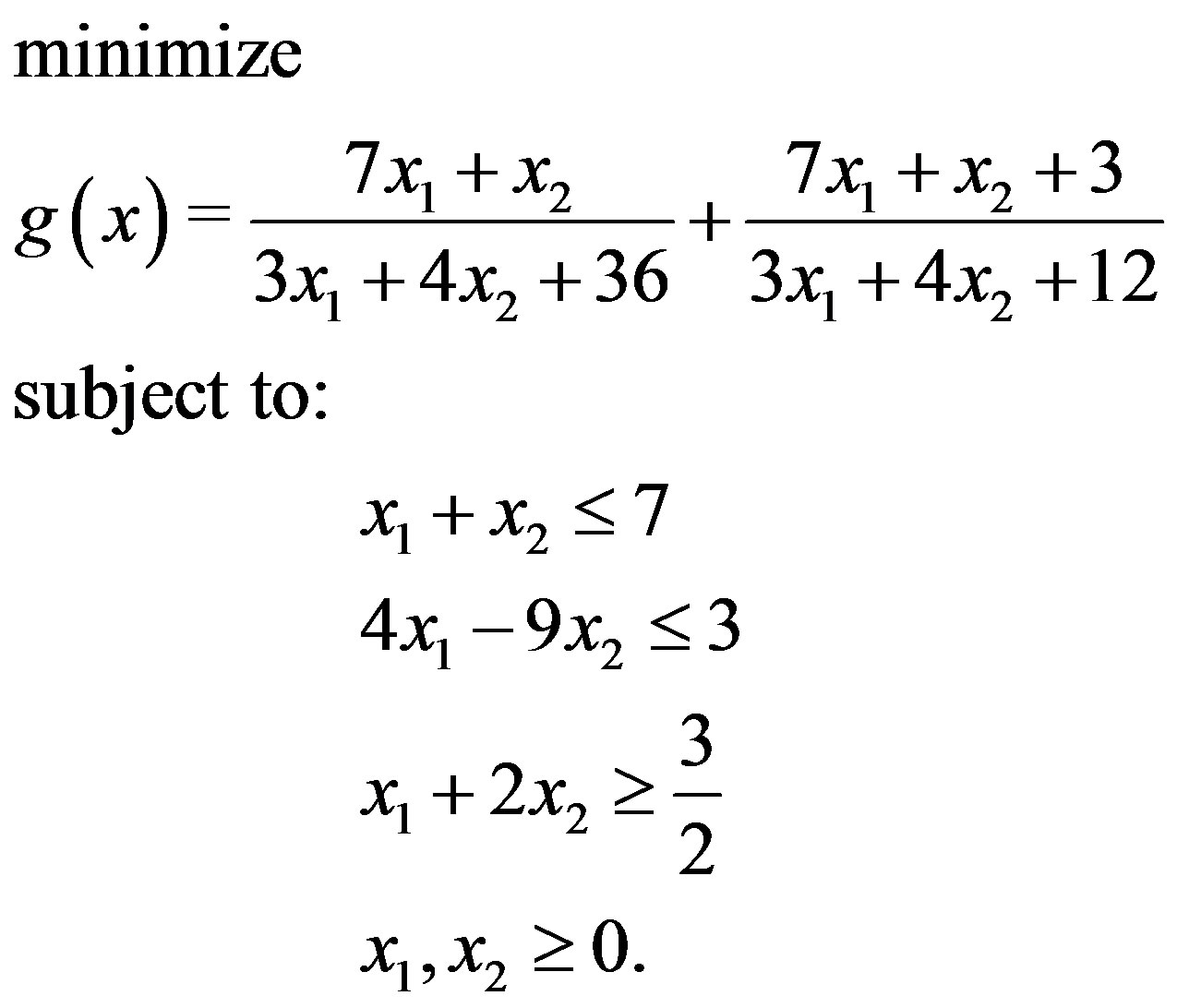 (21)
(21)
The optimal solution is  with optimal value
with optimal value .
.
Example 4.2. Now consider the following optimization problem:
 (22)
(22)
By Theorem 3.1, we can convert (22) to the following problem:
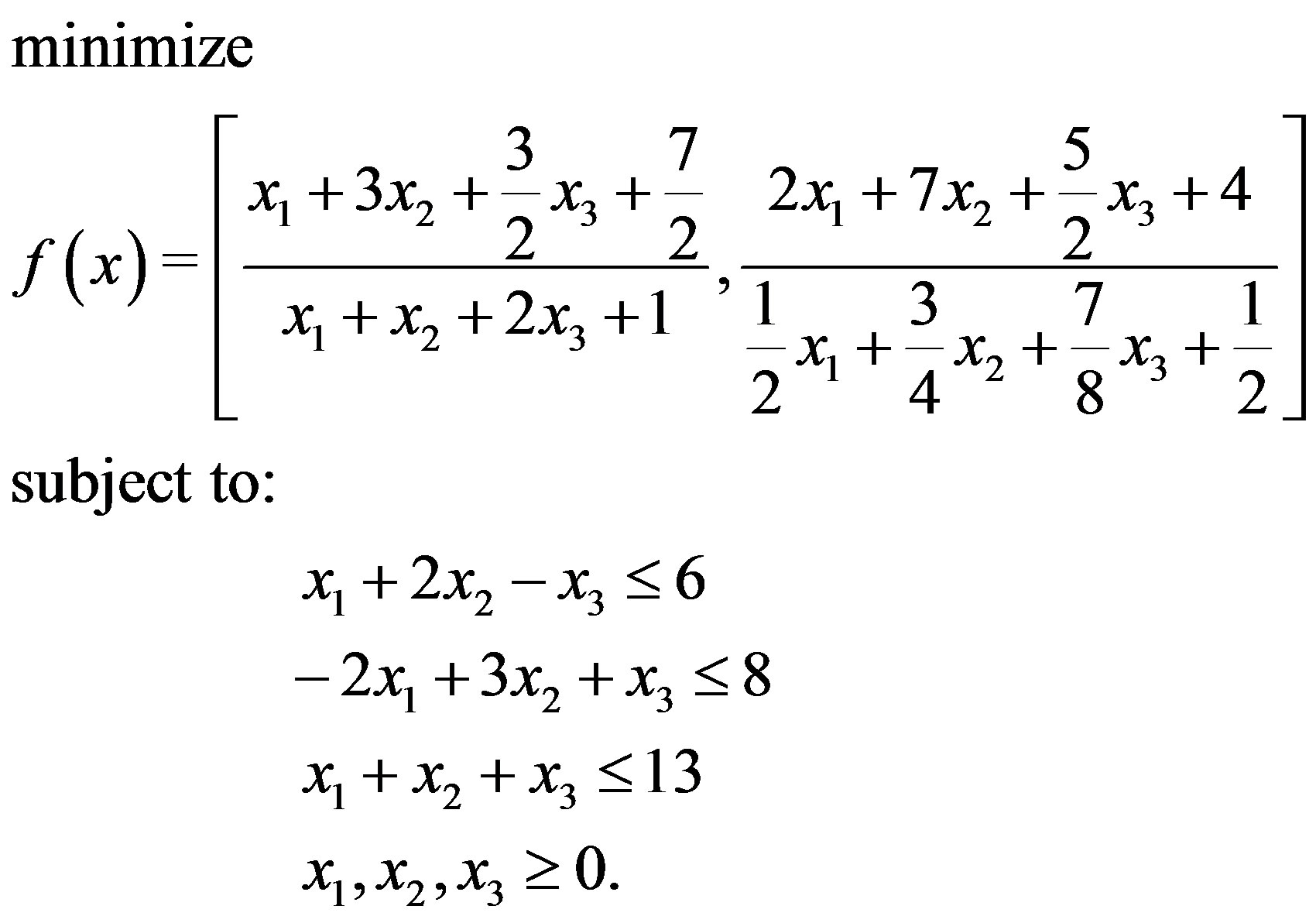 (23)
(23)
Now we can apply Theorem 3.2, and solve the optimization problem:
 (24)
(24)
Finally a nondominated solution for (22) is
 with
with
 , which is the optimal solution of (24).
, which is the optimal solution of (24).
Example 4.3. Consider the following applied problem from [17]:
A company manufactures two kinds of products ,
, 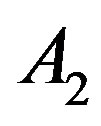 with a uncertain profit of
with a uncertain profit of ,
, 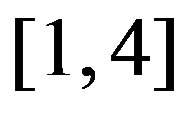 dollar per unit respectively. .However the uncertain cost for each one unit of the above products is given by
dollar per unit respectively. .However the uncertain cost for each one unit of the above products is given by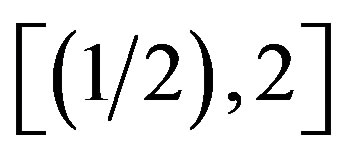 ,
, 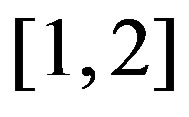 dollar. It is assumed that a fixed cost of
dollar. It is assumed that a fixed cost of  dollars is added to the cost function due to expected duration through the process of production and also a fixed amount of
dollars is added to the cost function due to expected duration through the process of production and also a fixed amount of  dollar is added to the profit function. If the objectives of this company is to maximize the profit in return to the total cost, provided that the company has a raw materials for manufacturing and suppose the material needed per pounds are 1, 3 and the supply for this raw material is restricted to 30 pounds, it is also assumed that twice of production of
dollar is added to the profit function. If the objectives of this company is to maximize the profit in return to the total cost, provided that the company has a raw materials for manufacturing and suppose the material needed per pounds are 1, 3 and the supply for this raw material is restricted to 30 pounds, it is also assumed that twice of production of 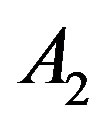 is more than the production of
is more than the production of  at most by 5 units. In this case if we consider
at most by 5 units. In this case if we consider  and
and  to be the amount of units of
to be the amount of units of ,
,  to be produced then the above problem can be formulated as
to be produced then the above problem can be formulated as
 (25)
(25)
The optimal solution is ,
, 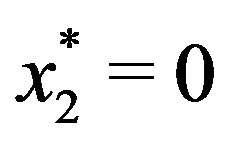 with the objective value
with the objective value 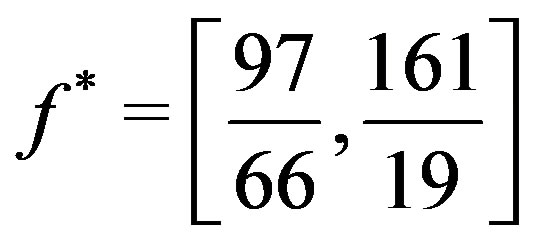
5. Conclusion
In this paper, first we introduced two possible types (Equations (8), (9)) of linear fractional programming problems with interval valued objective functions. Then we proved that we can convert the problem of the form (9) to the form (8). By solving (8), we obtained a nondominated solution for original linear fractional programming problem with interval valued objective function. Work is in progress to apply and check the approach for solving nonlinear fractional programming problems as well as for quadratic fractional programming problems.
REFERENCES
- H. Ohta and T. Yamaguchi, “Linear Fractional Goal Programming in Consideration of Fuzzy Solution,” European Journal of Operational Research, Vol. 92, No. 1, 1996, pp. 157-165. doi:10.1016/0377-2217(95)00052-6
- I. M. Stancu-Minasian, “Stochastic Programming with Multiple Objective Functions,” D. Reidel Publishing Company, Dordrecht, 1984.
- I. M. Stancu-Minasian and St. Tigan, “Multiobjective Mathematical Programming with Inexact Data,” Kluwer Academic Publishers, Boston, 1990, pp. 395-418.
- H.-C. Wu, “The Karush-Kuhn-Tucker Optimality Conditions in an Optimization Problem with Interval-Valued Objective Function,” European Journal of Operational Research, Vol. 176, No. 1, 2007, pp. 46-59. doi:10.1016/j.ejor.2005.09.007
- H.-C. Wu, “On Interval-Valued Nonlinear Programming Problems,” Journal of Mathematical Analysis and Applications, Vol. 338, No. 1, 2008, pp. 299-316. doi:10.1016/j.jmaa.2007.05.023
- I. M. Stancu-Minasian, “Fractional Programming,” Kluwer Academic Publishers, Dordrecht, 1997.
- A. Charnes and W. W. Cooper, “Programs with Linear Fractional Functions,” Naval Research Logistics Quarterly, Vol. 9, No. 3-4, 1962, pp. 181-196. doi:10.1002/nav.3800090303
- G. R. Bitran and A. G. Novaes, “Linear Programming with a Fractional Function,” Operations Research, Vol. 21, No. 1, 1973, pp. 22-29. doi:10.1287/opre.21.1.22
- S. F. Tantawy, “A New Procedure for Solving Linear Fractional Programming Problems,” Mathematical and Computer Modelling, Vol. 48, No. 5-6, 2008, pp. 969-973. doi:10.1016/j.mcm.2007.12.007
- P. Pandey and A. P. Punnen, “A Simplex Algorithm for Piecewise-Linear Fractional Programming Problems,” European Journal of Operational Research, Vol. 178, No. 2, 2007, pp. 343-358. doi:10.1016/j.ejor.2006.02.021
- H. Jiao, Y. Guo and P. Shen, “Global Optimization of Generalized Linear Fractional Programming with Nonlinear Constraints,” Applied Mathematics and Computation, Vol. 183, No. 2, 2006, pp. 717-728. doi:10.1016/j.amc.2006.05.102
- S. Schaible, “Analyse und Anwendungen von Quotientenprogrammen, Ein Beitrag zur Planung mit Hilfe der Nichtlinearen Programmierung,” Mathematical Systems in Economics, Vol. 42, Hain-Verlag, Meisenheim, 1978.
- S. Schaible, “Fractional Programming: Applications and Algorithms,” European Journal of Operational Research, Vol. 7, No. 2, 1981, pp. 111-120. doi:10.1016/0377-2217(81)90272-1
- S. Schaible and T. Ibaraki, “Fractional Programming, Invited Review,” European Journal of Operational Research, Vol. 12, No. 4, 1983, pp. 325-338. doi:10.1016/0377-2217(83)90153-4
- D. Ratz, “On Extended Interval Arithmetic and Inclusion Isotonicity,” Institut fur Angewandte Mathematik, University Karlsruhe, 1996.
- T. Hickey, Q. Ju and M. H. Van Emden, “Interval Arithmetic: From Principles to Implementation,” Journal of the ACM, Vol. 48, 2001, pp. 1038-1068.
- S. F. Tantawy, “An Iterative Method for Solving Linear Fraction Programming (LFP) Problem with Sensitivity Analysis,” Mathematical and Computational Applications, Vol. 13, No. 3, 2008, pp. 147-151.

